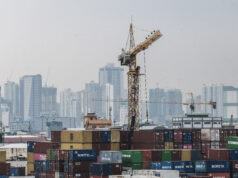PHL gloom to further deepen — IMF
By Luz Wendy T. Noble, Reporter
THE International Monetary Fund (IMF) expects a harsher downturn for the Philippine economy this year, with recovery likely to be slower as the global economic fallout from the coronavirus crisis appears to be worse than initially anticipated.
In its World Economic Outlook Update published on Wednesday, the IMF said it now projects a 3.6% contraction in the country’s gross domestic product (GDP) this year. This is a sharp reversal from the IMF’s baseline 6.3% growth forecast given last year and the 0.6% growth outlook given in April.
The government projects the economy to shrink by 2-3.4% this year. If realized, the IMF’s estimate will be the worst since the 6.9% GDP contraction in 1985.
“The downward revision to the 2020 growth forecast is mostly attributable to larger-than-expected supply disruptions related to COVID-19 and weaker demand in major trading partners,” IMF Resident Representative to the Philippines Yongzheng Yang said in an e-mail to BusinessWorld.
“With the latest downgrade of the global outlook, the external environment for the Philippines has also worsened,” he added.
The country’s GDP already dropped by 0.2% in the first quarter, dragged by the Taal Volcano eruption, the early impact of the virus outbreak and the first two weeks of the lockdown in March.
In its report, the IMF forecasts the global economy to shrink by 4.9%, worse than the three percent contraction it penciled in April and a reversal from the 3.3% growth projection in January.
“Consumption growth, in particular, has been downgraded for most economies, reflecting the larger-than-anticipated disruption to domestic activity… Moreover, investment is expected to be subdued as firms defer capital expenditures amid high uncertainty,” it said.
Economies should fine-tune their responses to cushion the impact of the economic fallout, the IMF said.
“Where lockdowns are required, economic policy should continue to cushion household income losses with sizable, well-targeted measures as well as provide support to firms suffering the consequences of mandated restrictions on activity,” it said.
“Where economies are reopening, targeted support should be gradually unwound as the recovery gets underway, and policies should provide stimulus to lift demand and ease and incentivize the reallocation of resources away from sectors likely to emerge persistently smaller after the pandemic.”
The so-called “Great Lockdown” will have cost more than 300 million jobs globally in the second quarter, the IMF said, with risks “particularly acute” for employment of low-skilled workers that do not have the luxury of working from home.
SLOWER RECOVERY
In the Philippines, Mr. Yang said sectors that will be hit hard include tourism and transportation, while the business process outsourcing (BPO) industry is likely to be “more resilient.”
“Recovery is likely to be slower and we now forecast GDP growth at 6.8% for 2021, down from 7.6% in the April World Economic Outlook,” he said.
The IMF said it priced in a slower recovery trajectory due to continued distancing measures in the second half of 2020, greater damage to supply chain caused by bigger-than-expected impact of the lockdowns earlier, and the hit to productivity of embattled businesses that have to deal with more workplace safety and hygiene practices.
“As the Great Lockdown begins to ease in several parts of the world, fiscal policies will have to adapt to country circumstances, balancing the need to protect people, stabilize demand, and facilitate recovery,” the IMF said.
Mr. Yang said the Philippines was armed with strong macroeconomic fundamentals when the pandemic started, providing some safeguards for the economy. Moving forward, timely policies will help the country bear the brunt of the crisis, he said.
“To protect the recent progress on poverty reduction, social protection programs should be strengthened as current temporary income support measures are phased out. Moreover, speedy policy implementation will be crucial to mitigate the scarring effects of COVID-19 on the economy,” he said.
Mr. Yang said the country has “some policy space” for additional stimulus if needed, and is armed with a debt-to-GDP ratio that is “well-below the emerging market average.”
The Development Budget Coordination Committee sees the debt-to-GDP ratio to expand to 49.8% this year and to 51.5% by 2021, from a record low of 39.6% in 2019.
“The government therefore has room to provide additional fiscal support, as needed, to the health sector, affected people and businesses,” he said.




